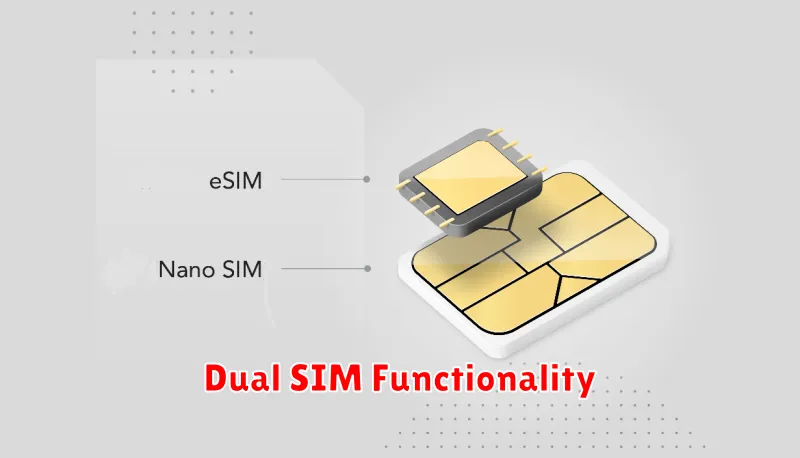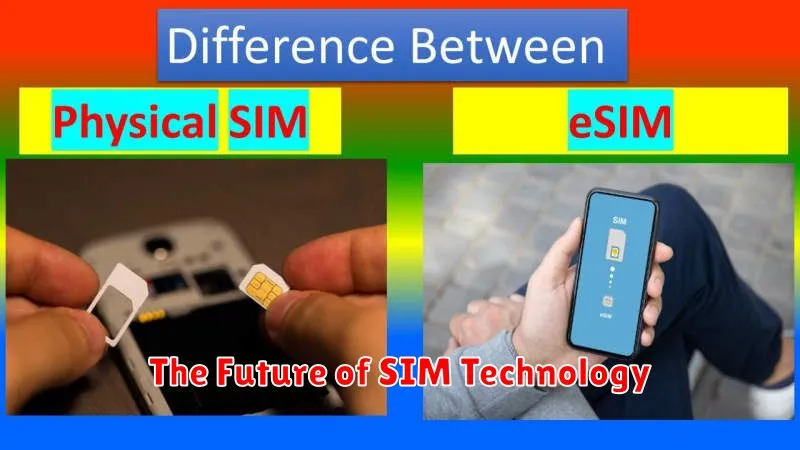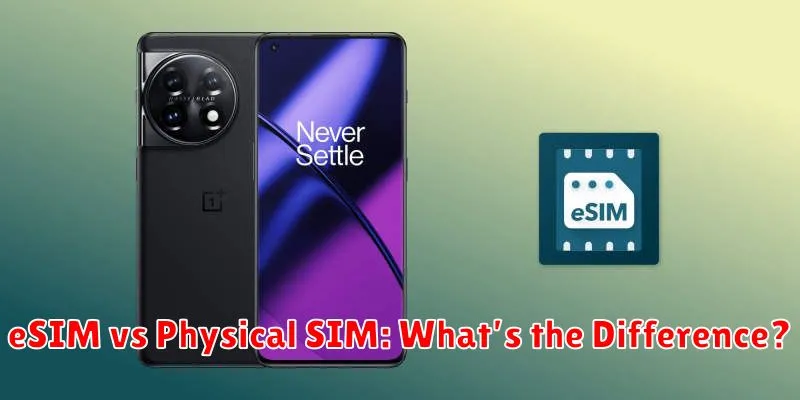Choosing between an eSIM and a physical SIM card can be a crucial decision when selecting a new mobile device or changing service providers. This article aims to clarify the distinctions between these two technologies, outlining the advantages and disadvantages of each to help you make an informed decision. Understanding the core differences between an eSIM and a physical SIM is essential for navigating the evolving landscape of mobile connectivity.
We will delve into the core functionalities of both eSIMs and physical SIMs, comparing their features, security aspects, and overall convenience. By exploring the contrasting characteristics of an eSIM versus a physical SIM, readers will gain a comprehensive understanding of which technology best suits their individual needs. Whether you prioritize flexibility, device compatibility, or security, this comparison will empower you to make the best choice between an eSIM and a physical SIM card.
What Is an eSIM?
An eSIM, or embedded SIM, is a digital SIM card. Unlike traditional physical SIM cards, an eSIM is embedded directly into a device’s circuitry. This means there’s no physical card to swap out.
Instead of a physical card, the eSIM uses software to store your carrier profile information. This profile allows your device to connect to a cellular network, enabling calling, texting, and data usage.
One of the key benefits of eSIM technology is the ability to switch carriers remotely without physically changing SIM cards. This offers greater flexibility and convenience for users.
How eSIM Works
An eSIM, or embedded SIM, is a small chip permanently embedded within a device. Unlike physical SIMs, eSIMs are reprogrammable, allowing you to switch carriers without physically swapping cards.
The process begins with scanning a QR code provided by your chosen carrier. This QR code contains the activation data required to download the carrier profile onto your device. Once downloaded, your device connects to the carrier’s network, just like a physical SIM.
This process is typically managed through your device’s settings menu. You can store multiple eSIM profiles on a single device but can only use one at a time. Switching between profiles is as simple as selecting the desired profile from your device’s settings.
Benefits of Using eSIM
eSIMs offer several advantages over traditional physical SIM cards. A key benefit is the convenience of switching carriers without physically swapping SIMs. This is particularly useful for travelers or users who frequently change mobile plans.
Space-saving is another advantage. By eliminating the need for a physical SIM card slot, device manufacturers can design smaller and sleeker devices, or utilize the freed-up space for other components like larger batteries.
eSIMs also contribute to device security. A fixed, embedded SIM is harder to tamper with or remove, making it a more secure solution than removable SIMs.
Dual SIM Functionality

Dual SIM functionality allows a phone to operate with two SIM cards simultaneously. This offers flexibility in managing different phone numbers and cellular plans.
Dual SIM Dual Standby (DSDS) is the most common type. Both SIMs are active and can receive calls, but only one can be used for data at any given time. When one SIM is on a call, the other is temporarily unavailable.
Dual SIM Dual Active (DSDA) allows both SIMs to be active and used for calls and data concurrently. This requires a more complex hardware setup and is less common.
eSIM technology makes dual SIM implementation easier by eliminating the need for a second physical SIM slot. Many modern phones utilize an eSIM alongside a physical SIM for dual SIM capabilities.
Activation Process Explained
Activating a SIM, whether physical or eSIM, involves a few key steps. For a physical SIM, you insert the card into your device’s SIM slot. Then, you typically power on the device and follow the on-screen prompts to activate service with your carrier. This may involve entering an activation code or contacting customer support.
eSIM activation is slightly different. Instead of a physical card, you scan a QR code provided by your carrier or enter the eSIM profile details manually. Your device then downloads the profile and activates your cellular plan. Some carriers may require a confirmation step or app download to complete the process. Both methods generally require a connection to the internet for final activation.
Supported Devices and Carriers
eSIM compatibility is growing rapidly, but it’s still not as universal as physical SIM cards. Generally, newer smartphones, tablets, and smartwatches from leading manufacturers offer eSIM support. However, checking your specific device’s specifications is crucial to confirm compatibility.
Carriers also play a vital role. While many major carriers worldwide support eSIM technology, smaller or regional carriers might not. Before switching to an eSIM, confirm that your chosen carrier provides eSIM services in your region.
eSIM While Traveling Abroad
eSIMs offer significant advantages for international travelers. Eliminating the need to locate a physical SIM card vendor upon arrival is a major benefit. Instead, travelers can activate a data plan from a carrier in their destination country directly on their device.
This streamlined process saves time and hassle, allowing for immediate connectivity upon landing. Furthermore, eSIMs allow for easy switching between carriers, empowering users to select the most cost-effective option or switch providers if experiencing connectivity issues.
Many modern smartphones support multiple eSIM profiles, enabling users to store and manage plans from various countries simultaneously. This is particularly advantageous for frequent travelers who can seamlessly switch between pre-purchased data plans depending on their location.
Privacy and Security Concerns
Both eSIM and physical SIM cards have robust security measures. However, some argue that eSIMs offer potentially enhanced security due to their integration within the device. This makes them more difficult to physically tamper with or remove for unauthorized access.
Conversely, physical SIMs can be more easily removed, which can be a security advantage if a device is lost or stolen. A removed SIM card renders the device unusable on a cellular network, protecting user data. Neither technology is inherently more secure; rather, the implementation and user practices are the key factors.
Limitations of eSIM Today
While eSIM technology offers numerous advantages, some limitations still exist. Device compatibility remains a key hurdle. Not all devices support eSIM functionality, limiting its widespread adoption. Consumers may find their desired phone or smartwatch model doesn’t offer eSIM as an option, particularly with older devices.
Carrier support also varies significantly across the globe. While adoption is growing, not all carriers offer eSIM services, restricting consumer choice in certain regions. Switching carriers with an eSIM can also be more complex than with physical SIMs, sometimes requiring contacting customer support.
The Future of SIM Technology

The trajectory of SIM technology points towards the eSIM becoming the dominant standard. Its inherent advantages of remote provisioning, space-saving design, and support for multiple profiles make it ideal for the increasingly connected world. This shift is further fueled by the rise of the Internet of Things (IoT), where eSIMs simplify connectivity for a wide range of devices.
While physical SIM cards will likely persist for some time, particularly in older devices, their eventual phasing out seems inevitable. The convenience and flexibility of eSIM technology offers a compelling proposition for both consumers and manufacturers, paving the way for a truly connected future.

